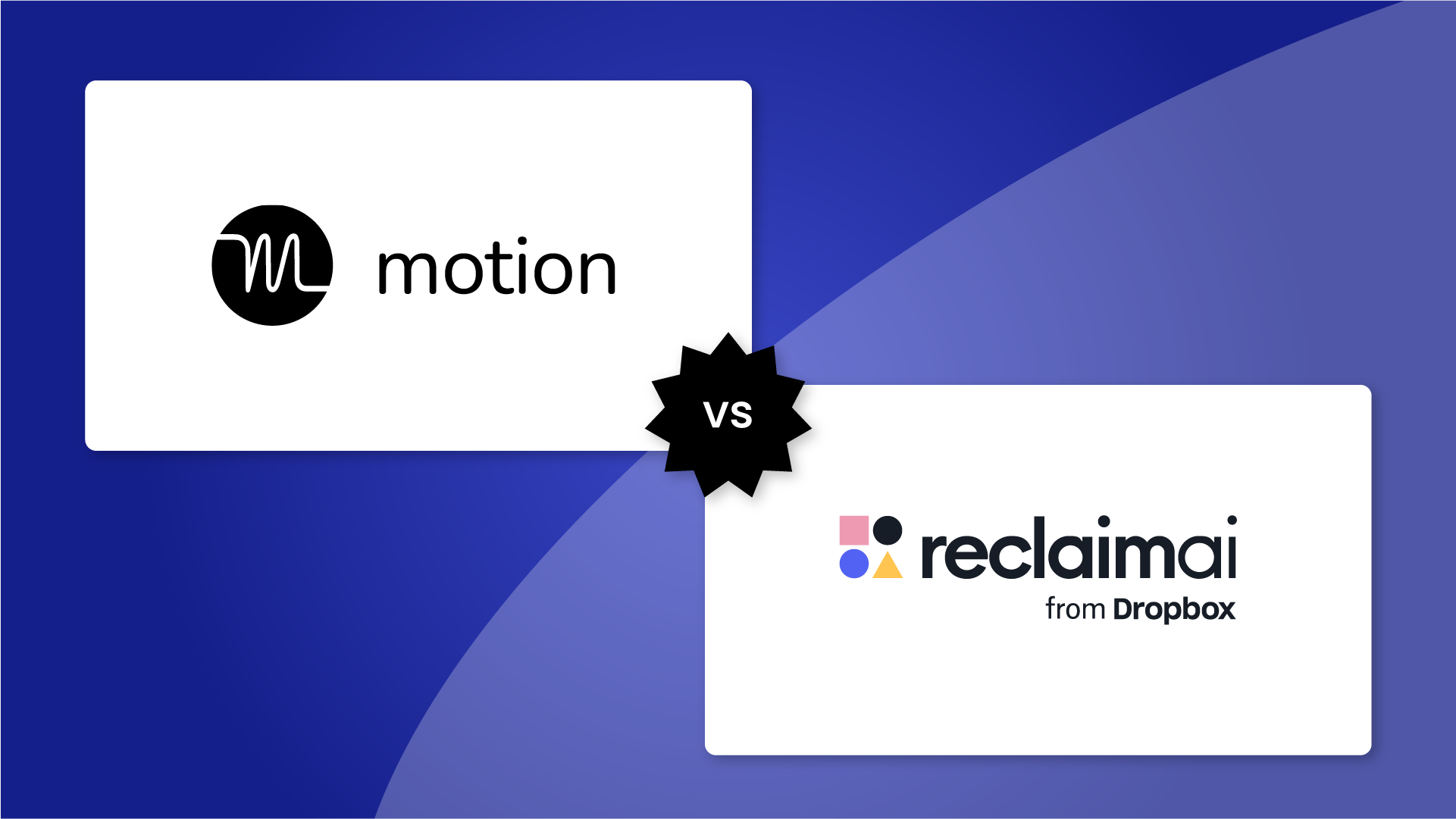Why do so many goals fall off track? It isn’t because you’re not working hard enough, the average person works 7.6 hours of overtime every week just to try to reach their goals. The problem usually boils down to planning.
Goal-setting is hard. There are so many moving parts to coordinate across your team – each one as important as the next. Every great idea needs a plan and a schedule to become real.
Fortunately for all of us, the SMART framework turns what could otherwise be a fuzzy intention into a precise plan. They aim to answer:
- What specifically do we want to accomplish?
- How do we measure progress and success?
- Is this a realistic and achievable goal?
- Is this goal relevant to improving our bottom line?
- What’s our time frame and deadline for this goal?
Without a well-planned roadmap to success, you’re likely going to fall short of your ambitious goals. This is where setting SMART goals that are attainable will help you work faster, collaborate more efficiently, and get more done to meet your deadlines.
With that said, here’s everything you need to know about the SMART goal setting:
What are SMART goals?

SMART is a structured framework for planning goals so that teams and individuals can align on outcomes, metrics, feasibility, strategy, and timing. At its core, SMART is just a simple way to make sure your goals aren’t vague or wishful thinking.
Here’s the breakdown of the SMART acronym:
- Specific → State exactly what you want to achieve. Define the scope, stakeholders, and expected result. Example: “Launch a new onboarding flow for mobile users.”
- Measurable → Add a number so you can track progress. “Cut churn from 10% to 7%” tells you exactly when you’ve hit the mark.
- Achievable → Keep it realistic. Ambitious goals are great, but they should fit within your resources, skills, and schedule.
- Relevant → Make sure the goal actually matters. Tie it back to your bigger objectives or strategy, so it’s worth the effort.
- Time-bound → Put a deadline on it. A date on the calendar creates urgency and keeps momentum going.
The term “SMART” first showed up in 1981 in an article by George T. Doran. Since then, it’s spread everywhere, from Fortune 500 companies to schools and even personal fitness. You might also see the “SMARTER” version, which adds Evaluate and Review so you’re checking in and adjusting as you go.
Why does it work so well? Because the concrete criteria it requires takes fuzzy ideas like “grow our business” or “be healthier” and forces you to make them concrete. That means less second-guessing and fewer wasted efforts.
Quick example:
“Increase monthly organic traffic from 50,000 to 60,000 by December 31 by publishing eight long-form guides and optimizing top landing pages. Track results weekly in analytics.”
Free SMART goals template
As you go through your own process of writing your SMART objectives, feel free to use our free template below to organize your goal planning:

SMART goals examples (50+)
Seeing SMART goals in action is the easiest way to understand how the framework works. Below you’ll find examples across departments at work, plus personal life categories. Each one is written with the full SMART structure: clear outcome, measurable metric, realistic scope, tied to strategy, and anchored to a deadline.
Workplace SMART goals
Sales
- “Close $1.2M in Q4 revenue by targeting 20 strategic accounts with weekly outreach; review pipeline hygiene every Friday.”
- “Increase upsell revenue by 15% within 6 months by creating a quarterly account review program for 50 existing customers.”
- “Book 40 qualified discovery calls by March 31 by dedicating 10 hours per week to outbound prospecting.”
Marketing
- “Grow organic sessions from 50,000 to 60,000 by December 31 by publishing eight long-form guides and optimizing top landing pages.”
- “Boost email open rates by 10% within 3 months by A/B testing subject lines and refining send times.”
- "Successfully create and launch a new website to increase our user purchase rate by 25%."
Customer support
- “Increase CSAT from 85% to 95% by March 31 by introducing follow-up workflows and shortening average response times.”
- “Raise first-contact resolution from 75% to 90% within 4 months by building a searchable knowledge base and training agents on escalation paths.”
- “Reduce churn by 5% this year by implementing quarterly business reviews for top 100 customers.”
Engineering / product
- “Reduce 5xx API error rate below 0.05% by November 30 through circuit breakers, monitoring, and automated failover.”
- “Ship three new feature improvements by the end of Q3 with a dedicated sprint team of five engineers.”
- “Reduce cybersecurity vulnerabilities by 30% within the next quarter to reduce risk of disruptions to core operations by conducting regular security audits, deploying container security best practices, implementing necessary patches, and providing comprehensive employee training on data security protocols."
Human resources
- “Improve employee retention by 20% by December 31 by running stay interviews, analyzing exit data, and launching retention programs.”
- “Fill all open engineering roles within 90 days by streamlining the hiring funnel and adding two recruiters to the team.”
- “Raise employee engagement scores from 70% to 80% in the next survey cycle by introducing monthly manager check-ins and recognition programs.”
Finance / operations
- “Reduce departmental spend by 10% by end of fiscal year by auditing vendors and renegotiating contracts.”
- “Shorten invoice processing time from 14 days to 7 days by May by implementing automated AP software.”
- “Increase gross margin by 3% this year by shifting 20% of procurement to lower-cost suppliers while maintaining quality.”
Education / training
- “Launch an internal mentorship program by October with at least 25 mentor–mentee pairs matched.”
- “Certify 80% of the support team on advanced product training by end of Q2.”
Healthcare / nursing
- “Reduce patient wait times by 20% within 6 months by redesigning shift schedules and introducing a triage station.”
- “Achieve 95% compliance with hand hygiene checks by end of quarter through weekly audits and refresher training.”
Personal SMART Goals
Fitness & health
- “Run a half marathon in under three hours within six months by following a progressive training plan.”
- “Lose 10 pounds in 3 months by exercising 4 times a week and reducing daily calorie intake by 500.”
- “Meditate for 10 minutes daily for 60 days to reduce stress and improve focus.”
Education & learning
- “Score 90%+ on my final exam by dedicating 10 hours weekly to study sessions for three months.”
- “Complete an online data analytics certification by December 31 by finishing two modules per month.”
- “Read 12 books this year by scheduling 30 minutes of reading every evening.”
Finance & personal planning
- “Save $6,000 in 12 months by setting aside $500 monthly and reducing discretionary spending.”
- “Pay off $3,000 in credit card debt in 10 months by automating $300 monthly payments.”
- “Build a $20,000 emergency fund in 2 years by saving $800 monthly.”
Hobbies & skills
- “Learn guitar within six months by practicing 30 minutes daily and completing one online music theory course.”
- “Start a blog and publish one article per week for the next 12 weeks to improve writing consistency.”
- “Cook 20 new recipes in 6 months by trying one new dish every weekend.”
Travel & lifestyle
- “Visit five new countries within five years by booking and executing at least one international trip annually.”
- “Take one solo weekend trip per quarter in 2025 to build confidence and explore new places.”
- “Explore 10 local hiking trails by the end of summer by scheduling one hike every other weekend.”
Why so many examples?
The more specific you get with examples, the easier it is to adapt the framework to your own life or work. These aren’t meant to be copy–paste goals but templates to spark your own thinking. A SMART goal is only powerful if it reflects your reality and priorities.
How to write SMART goals
Writing a SMART goal is like filling in the blanks of a story: you need to know what you want, why it matters, how you’ll measure it, whether it’s realistic, and when it needs to be done. Here’s how to walk through each step.
1. Specific
A vague or general goal like “grow the business” or “get healthier” doesn't give you or your team much to work with. It’s much better, when setting objectives, to explicitly spell out the who, what, why, and how of your goal. This kind of specificity will carry you through the rest of your SMART goal-setting.
Ask yourself:
- What exactly am I trying to achieve?
- Why is this goal important right now?
- Who needs to be involved?
- What are the boundaries or scope?
For example:
- “Publish 8 SEO guides targeting our highest-priority keywords to increase organic sessions.”
- “Run a half-marathon in under three hours by following a progressive training schedule.”
2. Measurable
If you can’t measure it, you’ll never know if you’ve succeeded. And when we say “measurable goals,” we mean a goal tied to a key performance indicator (KPI), number, or milestone that can objectively determine progress toward your target.
Ask yourself:
- What data or metric proves progress?
- How will I track it (analytics, surveys, financials, key performance indicators, etc.)?
- What’s the success threshold?
- What does “done” look like?
For example:
- “Increase newsletter subscribers by 10,000 within 12 months.”
- “Reduce customer support response time from 12 hours to 6 hours by Q2.”
3. Achievable
There’s nothing wrong with setting ambitious goals. Fortune favors the bold and all. But this shouldn’t come at the cost of setting yourself up for failure. A SMART goal must be doable given the available resources, time, and skills available.
Ask yourself:
- Do we have the people, budget, or tools to make this happen?
- Is the timeline realistic?
- What roadblocks or dependencies might stand in the way?
For example:
- “Launch a new certification course in 9 months while maintaining our quarterly product release schedule.”
- “Save $500 per month toward an emergency fund by cutting restaurant spending and automating savings transfers.”
4. Relevant
A goal can be specific, measurable, and achievable, but if it doesn’t matter to your long term objectives, it’s not worth chasing. The relevance in question should tie back to your strategy, OKRs, or personal priorities. This is the “why” behind your SMART goal.
Ask yourself:
- How does this goal move the needle for the team or company?
- Does it align with broader OKRs or personal values?
- Will achieving it create a meaningful impact?
For example:
- “Boost retention by 15% this year to support the company’s North Star metric of monthly active users.”
- “Improve fitness endurance to prepare for next summer’s triathlon.”
5. Time-bound
Finally, a SMART goal needs a deadline or defined timeline of some sort. You could hit every other letter of SMART, but without a firm target date, your goals could still drift (and be left undone). Your final step is to determine a defined endpoint along with some checkpoints along the way.
Ask yourself:
- When does this need to be completed?
- What milestones will keep me on track?
- Is the clear timeline realistic given my other commitments?
For example:
- “Ship the new onboarding flow by October 15; beta test with 100 users by September 20; QA by October 10.”
- “Read 12 books by the end of the year by finishing one per month.”
A complete SMART goal in action:
“Increase customer satisfaction scores from 85% to 92% by June 30 by implementing a follow-up survey process, training reps on faster resolutions, and reviewing results weekly in team meetings.”
Pros & cons of SMART goals
Nothing in life is perfect, and the SMART strategy is no different. It’s an effective goal-setting framework, no doubt, but it has its own pros and cons:
Pros of SMART Goals
1. Better clarity & focus
Vague goals like “do better in sales” or “get healthier” might be well and good, but they don’t provide any real direction. A SMART goal, though, explicitly defines what success looks like. After all, you can’t be laser-focused on achieving your goals if you don’t know precisely what you’re aiming for.
2. Success is easily measurable
The beauty of SMART goals is that they're trackable. You set milestones or numbers, for example, growing your newsletter by 50 subscribers a week, and suddenly, you can see exactly how you're doing. With these data points at your disposal, it’s easy to tweak things on the fly and celebrate mini-wins.
3. Easy to communicate
SMART goals can speak clearly to everyone involved. I mean, take a peek at our examples again. With one glance, everyone gets what the objective is right from the start. Less confusion, fewer misunderstandings, and better accountability; what’s not to love?
4. Realistic & achievable
A SMART goal, by definition, will be a realistic goal. They’re not wild, pie-in-the-sky dreams. At the same time, though, they allow you to aim your sights high, while still making progress possible. It’s a framework that helps teams avoid impossible targets that drain morale while still encouraging reachable milestones.
5. Healthy pressure from precise timelines
A time-bound goal adds healthy pressure into the mix. Knowing you have to ship your project by the end of September injects a healthy dose of urgency. As we mentioned, it becomes easier for goals to drift or things to be pushed to the back burner when there isn’t a clear deadline involved.
Cons of SMART Goals
1. Potentially rigid & inflexible
What makes you, breaks you. And, for that reason, SMART goals can sometimes feel a bit too tight. It’s that very same specificity that makes SMART goals effective, which makes them a bit inflexible in times of change. If priorities shift or the market flips unexpectedly, rewriting a perfectly good SMART goal might feel like unnecessary busywork.
2. Some things are difficult to measure
Ultimately, not everything can be reduced to a datapoint. Creative, relationship-driven, or exploratory work isn’t always easy to quantify. A teacher’s impact on student confidence, for example, may not lend itself neatly to KPIs, but that doesn’t make it any less valuable.
3. Unrealistic expectations
Ironically, a goal that looks perfect on paper isn't always realistic. If you overlook the "Achievable" part, or there are disagreements on what exactly is or is not achievable, you might accidentally set the team up to fail.
4. Tunnel vision
SMART goals keep your eyes locked on the prize, but there's a downside: tunnel vision. Hyper-focused teams risk missing surprising opportunities or ignoring brilliant ideas that fall slightly outside the original target. The trick is finding that sweet spot between focus and flexibility.
What does a real-world SMART goal example look like?
In 2008, Sundar Pichai, before he became CEO of Google, was instrumental in the launch of Google Chrome, now the world's most popular web browser. Google had been trying to push something like Chrome for years. But finally, after Google co-founders Sergey Brin and Larry Page hired former Mozilla employees to create a demonstration for Eric Schmidt (the then-CEO of Google), Schmidt agreed, and Google set the goal to build the world's best browser.
With this specific goal in mind, Pichai needed to determine how they’d gauge success after their launch. How could you measure whether or not Google Chrome was, in fact, the world's best browser? Ultimately, he decided that the number of users would be the most relevant deciding factor. After all, if a particular browser was indeed the best in the world, a majority of people would naturally be using it.
From there, Pichai sketched out a three-year time frame to grow Chrome's user base. In the first year post-launch, Pichai set his sights on 20 million users. In the second year, 50 million. Finally, in the third year, the goal was set to 100 million users.
So, what did the Google Chrome SMART goal look like?
- Specific: Build the world's best browser.
- Measurable: Measure new user growth with the target being 100 million users.
- Achievable: Google already commanded a huge market share with search.
- Relevant: Google's core business is centered around Google Search and web browsing more generally.
- Time-bound: Achieve 100 million users in three years.
While he slightly missed the mark in his first two years, by year three, Chrome had over 111 million users. Today, Google Chrome is used by over 3 billion people with a user base that continues to grow every year (statistically speaking, you're probably reading this article in a Chrome window!). This is just one example of the potential of setting and committing to SMART goals.
Achieve more, faster with SMART goals 🏆
SMART goals serve as a concrete action plan for your ambitions. It can be a great way to turn big, fuzzy ideas into achievable outcomes with clear metrics, deadlines, and accountability.
But goals only matter if you act on them.
- Download the SMART goals template and draft your next objective.
- Use the examples above to spark ideas that fit your team or personal life.
- Apply the framework consistently to hit milestones with confidence.
Reclaim.ai helps you take SMART goals off the page and into your calendar. Reclaim automatically syncs your goals, milestones, and tasks into your calendar. That way, the important work actually gets done, without the chaos of constant rescheduling.
👉 Bring your SMART goals into your calendar with Reclaim.ai →






























